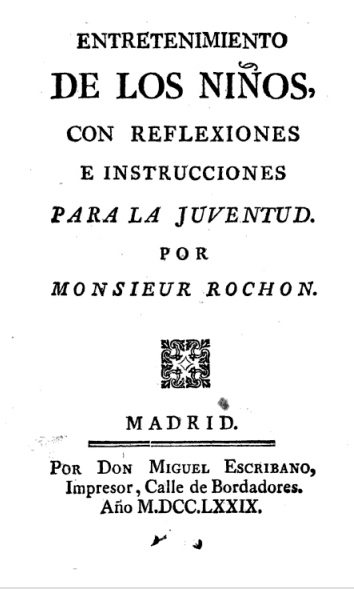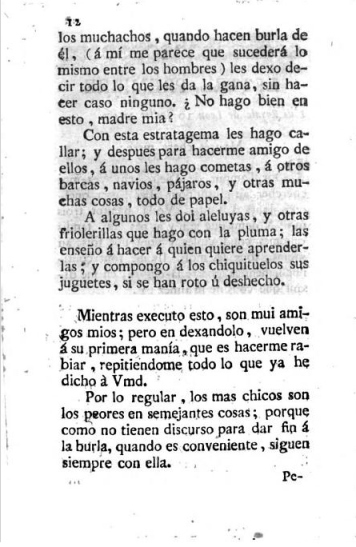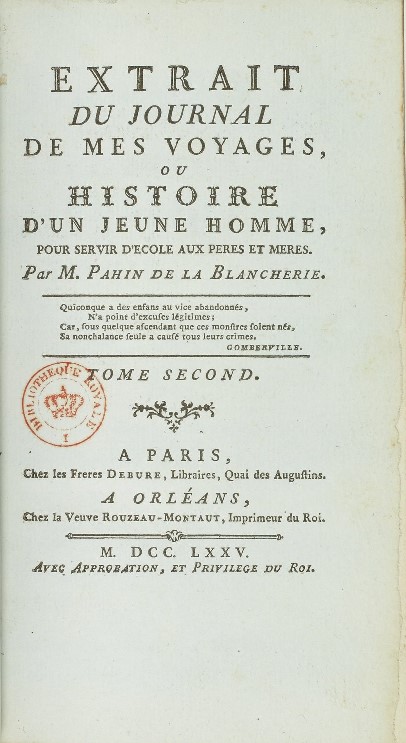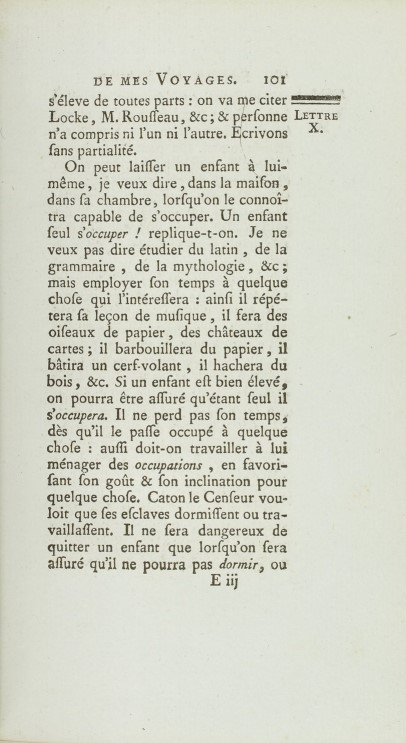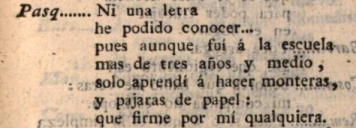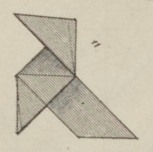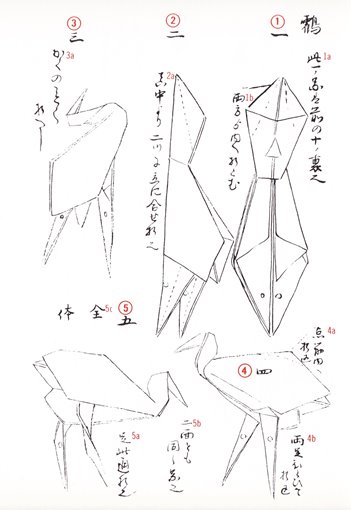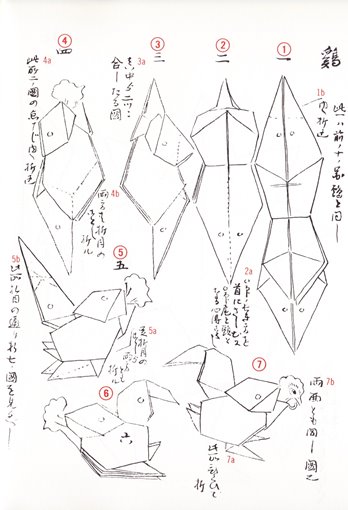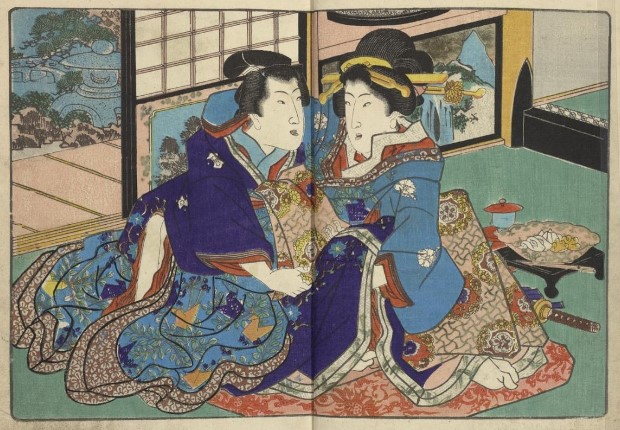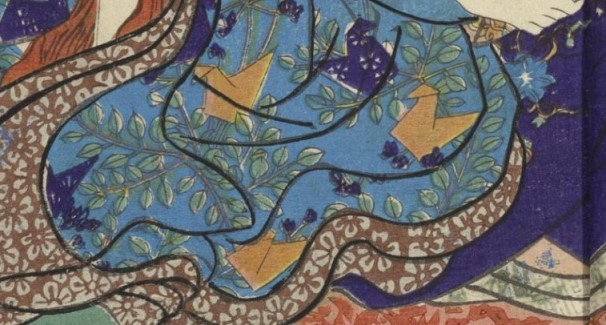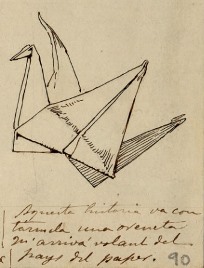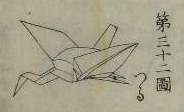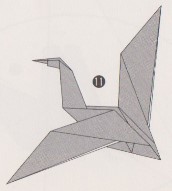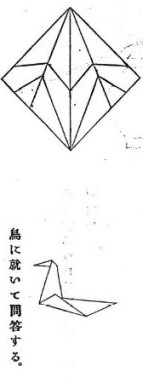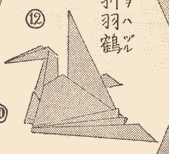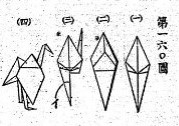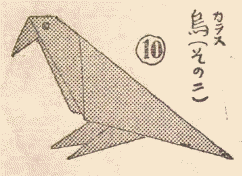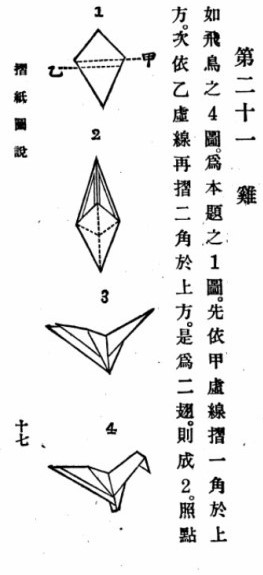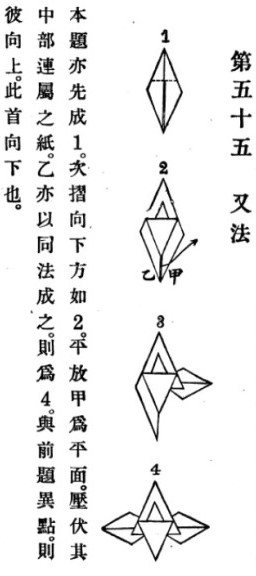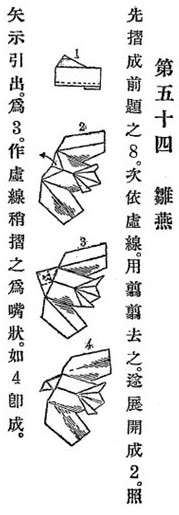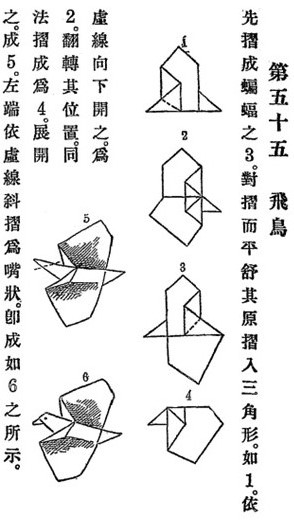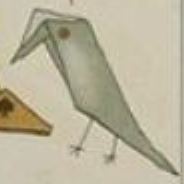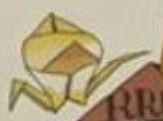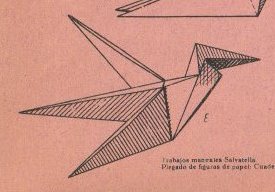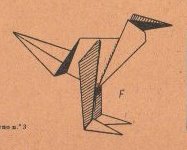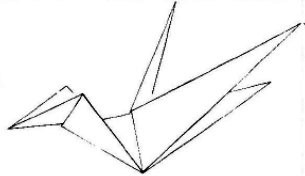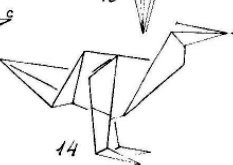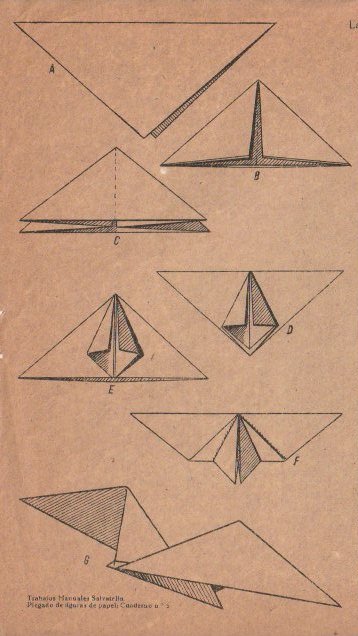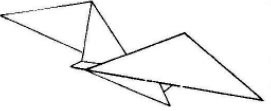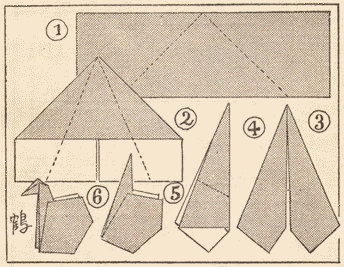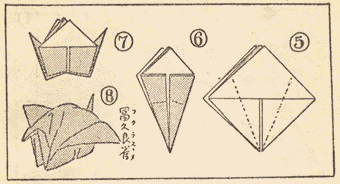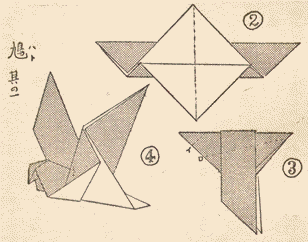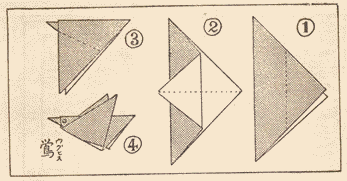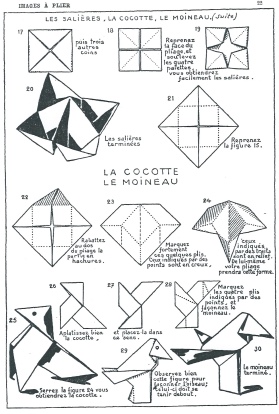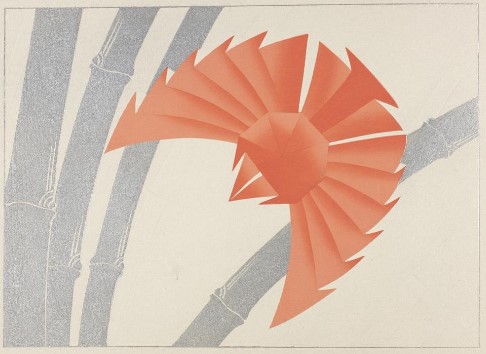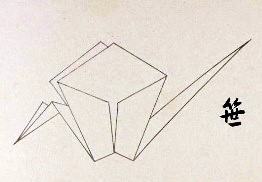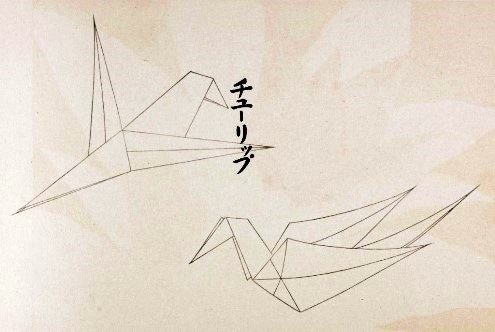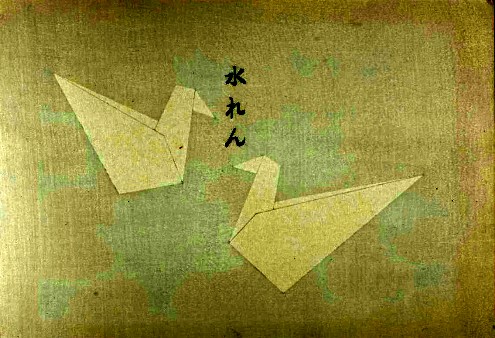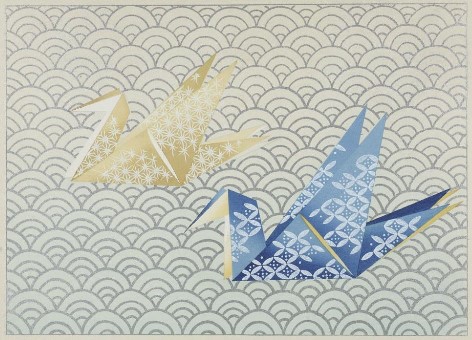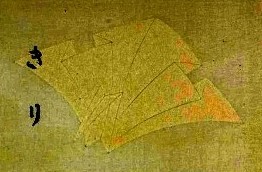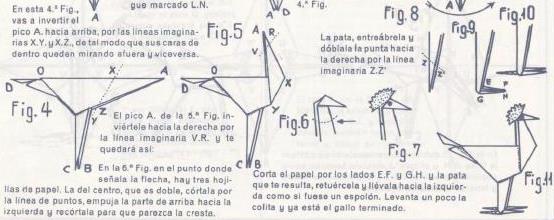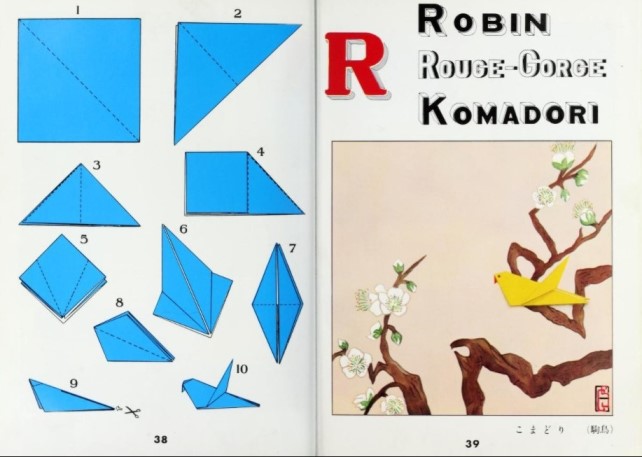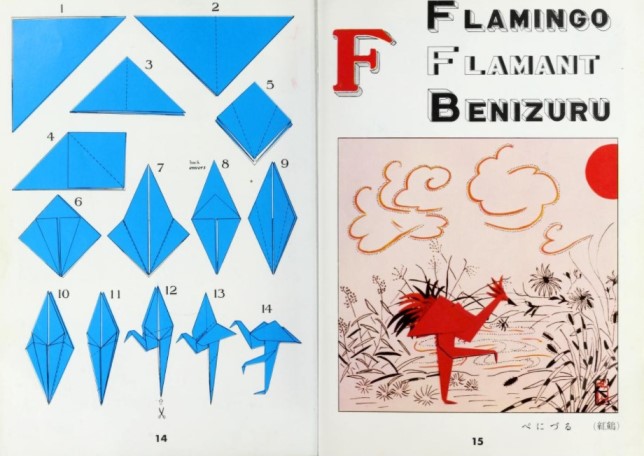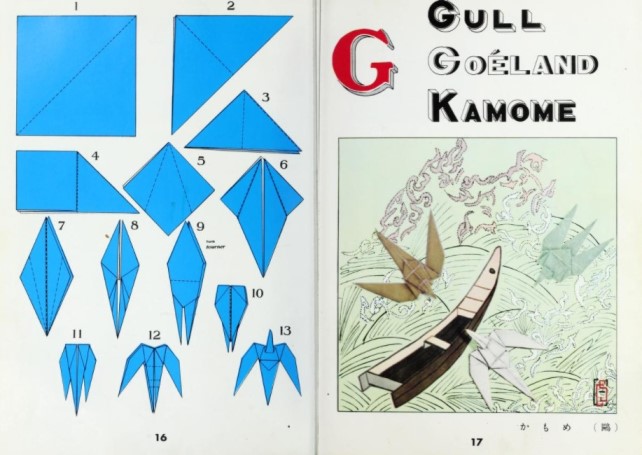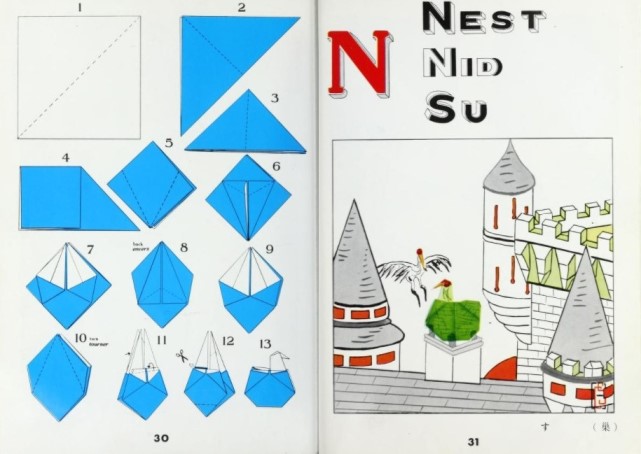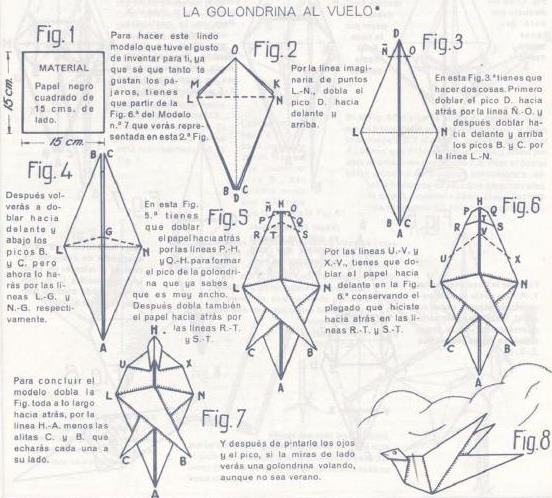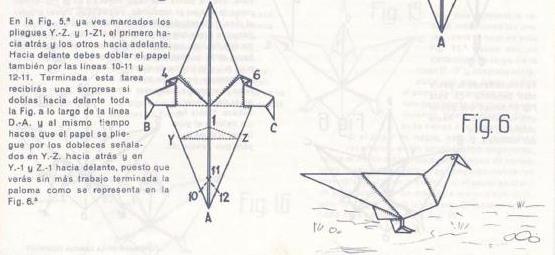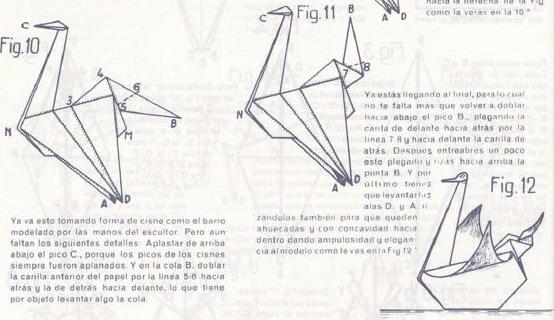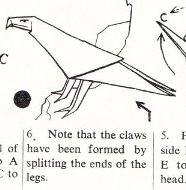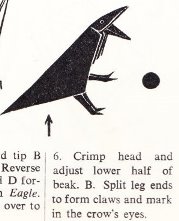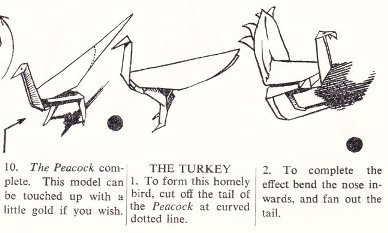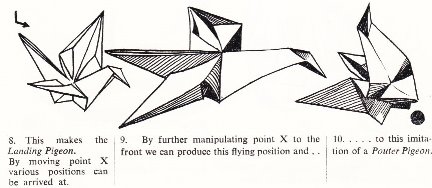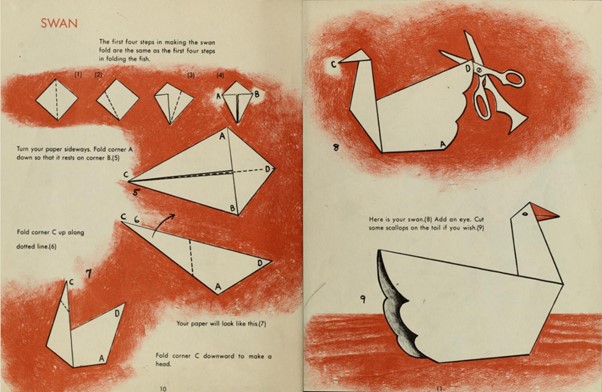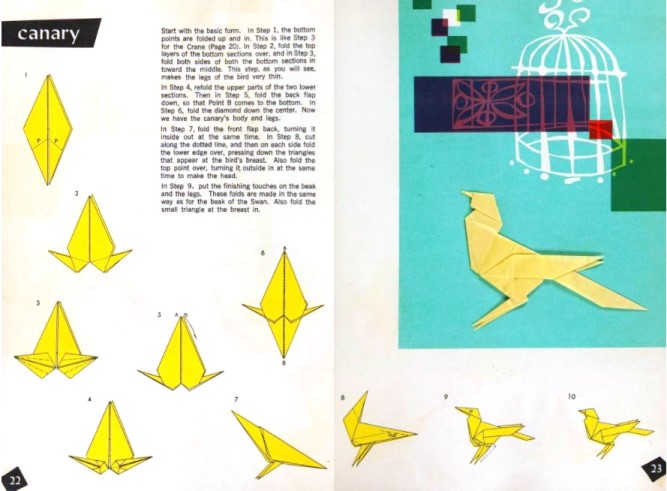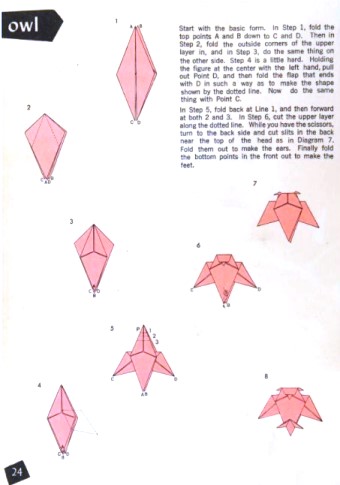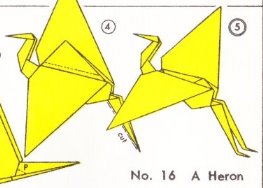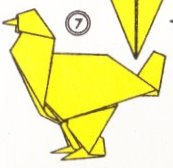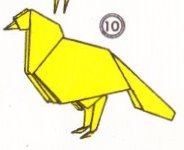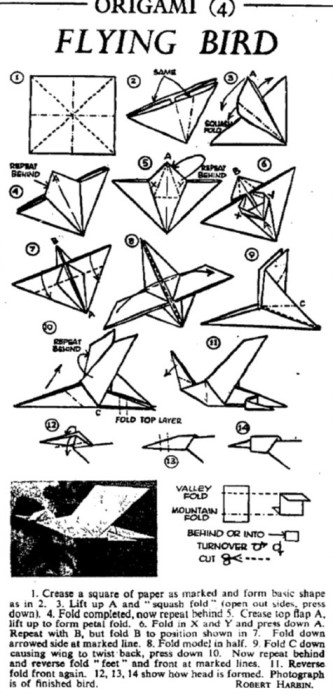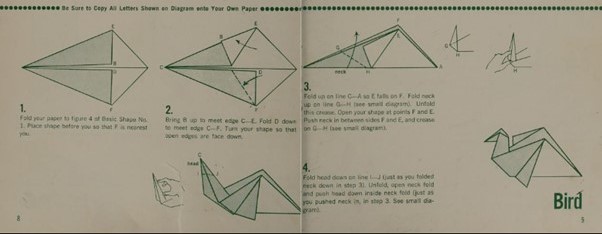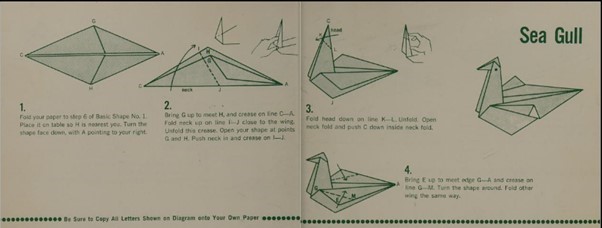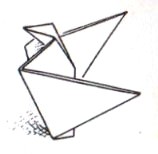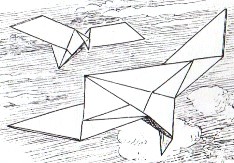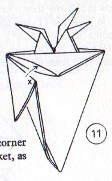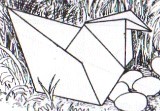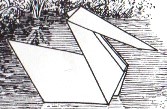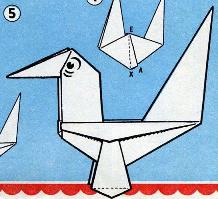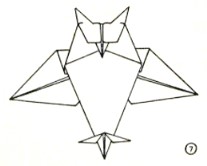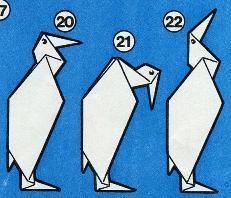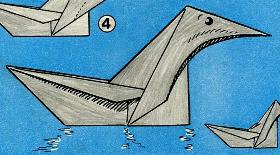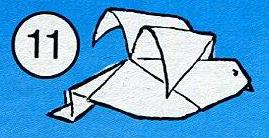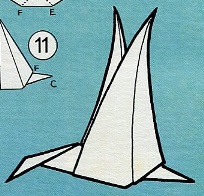| The Public Paperfolding History Project
Last updated 10/4/2024 x |
|||||||
| Folded Paper Birds | |||||||
| This
page is being used to collect information about the
history of folded paper birds. Please contact me if you
know any of this information is incorrect or if you have
any other information that should be added. Thank you. It is worth noting that in French literature the phrase 'oiseau de papier' often means a kite. There are separate pages for Paper Peacocks, Paper Penguins and Ducks and Swans. ********** The Paper Crane or Orizuru - 1603 onwards
********** 1664 'Dictionarium Gallico-Germanico-Latinum, by Nathanaël Duëz was published in Amsterdam in 1664. It contains mention, in three languages, of 'A paper bird and a paper boat, like children make in school.'
********** 1757 In a letter sent home to his mother from his school on the Isla Real de Leon, dated 10th July 1757, schoolboy Guillermo Pen wrote 'Con esta estratagema les hago callar; y despues para hacerme amigo de ellas, a unos les hago cometas, a otros barcas, navios, pajaros, y otras muchos cosas, todo de papel.' (With this ploy I silence them; and then to make friends with them, I make kites for some, for other boats, ships, birds, and many other things, all of paper.) His letter can be found in 'Entretenimiento de Los Ninos' by Monsieur Rochon, published in Madrid in both Spanish and French in 1779.
Without better descriptions or illustrations, we cannot unfortunately know whether the 'boats, ships and birds' were designs of Guillermo Pen's own devising, or traditional paperfolds such as the Paper Boat or the Cocotte / Pajarita. ********** 1775 'Extrait du Journal de Mes Voyages' by M. Pahin de la Blancherie, which was published in Paris and Orleans in 1775 contains a passage which, roughly translated, reads, 'You can leave a child in his own home, I mean, in the room, when you know he can take care of himself ... I don't mean studying Latin, grammar, mythology, & c; but to use his time for something that will interest him: thus he will repeat his music lesson, he will make paper birds, houses of cards; he will paint on paper, he will build a kite, he will whittle wood, & c. If a child is well behaved, we can rest assured that being alone he will take care of himself.' This passage refers to the making of paper birds as if it is, like the building of card castles, an activity commonly practised by boys. This suggests that these paper birds were probably Cocottes but without an illustration, or a more detailed description, we cannot be certain that they were.
********** c1790 Around 1790 Juan González del Castillo (1763-1800) premiered the sainete 'Los cómicos de la legua', a work in which the character Pasqual says, roughly translated, 'although I went to school more than three years and a half, I only learned how to make paper hats and birds of paper'.
Lacking a picture, we cannot be certain which type of 'pajaras de papel' (paper birds) or which type of 'monteras' (paper hats) are being referred to here. ********** The Cocotte / Pajarita - 1801 onwards
********** 1845 Designs for two birds, a crane made from the irregular slit octagon base, and a chicken made from the irregular slit octagon base, appear in the 'Kan No Mado', which is usually dated to 1845. Crane (a standing version, not the traditional Orizuru design)
*** Chicken
********** The Simple Crane - c1850 This design appears on a kimono in this print in a book of shunga by Insuitei Shozan (1821-1907) from vol 2 of 'Iro Shiki Shi' which is undated, but is usually said to be from the mid 19th Century.
********** The Flapping Bird - 1883 onwards
********** 1885 An illustration of a Flying Crane appears in 'Kindergarten Shoho' (Preliminary Kindergarten) by Iijima Hanjuro, which was copyrighted on October 4th Meiji 17 (1884) and published by Fukuda Senzo in August of Meiji 18 (1885). This design appears to have both feet and a tail, although it is possible that these have been developed by cuts from a standard Paper Crane.
********** 1889 'La Nature' of 28th September 1889 contained an article headed 'Recreation Scientifiques' and subheaded 'La Grenouille Japonaise en Papier' (The Japanese Paper Frog) which mentions the Paris Exposition of 1889 and states (here in translation) 'We also noticed in the exhibition other designs among which were the crab from red paper, the junk and the hat of Daimios (demon), the parrot etc.,' Unfortunately, lacking an illustration, there is no way of knowing which design of parrot is being referred to here. ********** The Wild Goose - 1896 onwards
********** The Cut Swallow - 1900 onwards
********** 1903 A design for a simple 'crane' appears in 'Shukouka no Liron Oyobi Jissai' (Handicraft Theory and Practice) by Kuniho Nakamura and Shinpei Ito, which was published by Kofukan in Tokyo in 1903. It is not clear to me how the crease pattern relates to the drawing of the finished design.
********** The Albatross - 1904 onwards
********** The Nesting Crane - 1905 onwards
********** The Cut Heron - 1905 onwards
********** The Crow with Legs - 1914 onwards
********** A design for a 'Chicken' developed from a bird base appears in 'Zhe zhi tu shuo' (Illustrated Paperfolding), compiled by Gui Shaolie, which was published by the Commercial Press in Shanghai in Ming guo 3 (1914).
********** A design for a 'Swallow' developed from a bird base appears in 'Zhe zhi tu shuo' (Illustrated Paperfolding), compiled by Gui Shaolie, which was published by the Commercial Press in Shanghai in Ming guo 3 (1914).
********** 1917 'Xu Zhe zhi tu shuo' (More Illustrated Paperfolding) by Yongxiang Shi, which was published by the Commercial Press in Shanghai in 1917, contains designs for several paper birds. Flying Pigeon
********** Fledgling
********** Young Swallow
********** Flying Bird
********** The Simple Crow - 1927 onwards
********** The Plump Crane - 1927 onwards
********** c1929 Booklet 3 of 'Trabajos Manuales Salvatella - Plegado de figuras de papel', which was published by Editorial Miguel A Salvatera in Barcelona around 1929, contains two designs for paper birds: La Paloma (Dove)
*** El Pavo (Turkey)
********** Both of these birds also appear in 'Una Hoja de Papel' by Lorenzo Herrero, which was published by Miguel A Salvatella in Barcelona in 1952: 'Golondrina' (Swallow)
*** 'Pavo' (Turkey)
********** Booklet 5 of 'Trabajos Manuales Salvatella - Plegado de figuras de papel', which was published by Editorial Miguel A Salvatera in Barcelona in or around 1929, contains diagams for 'El Condor', which is simply the front section of the Swallow paper plane, with extra folds to create the bend in the wings.
*** The same design appears in 'Una Hoja de Papel' by Lorenzo Herrero, which was published by Miguel A Salvatella in Barcelona in 1952.
********** 1931 Instructions for making several kinds of paper bird also appear in 'Origami (Part 1)' by Isao Honda, which was first published in Japan in 1931: Simple Crane (2) - Folded from a 3x1 rectangle
********** The Fat Sparrow - 1931 onwards
********** The Dove - 1931 onwards
**********
********** Le Moineau - 1932 onwards
********** 1935 'Origami Moyo, Book One', by Kawarazaki Kodo, which was published by Unsodo in Japan in 1935, contains a coloured print showing a 'suzume' (sparrow) and two other prints showing unidentified bird designs:
***
********** 'Origami Moyo, Book Two' by Kawarazaki Kodo, which was published in Japan in 1935, contains: A third Simple Crane design
*** A print showing 'mizudori' (which means 'water birds')
*** And another print showing this bird, which is not given any title.
********** 1939 A design for a Rooster, 'El gallo', can be found in 'El Mundo de Papel' by Dr Nemesio Montero, which was published by G Miranda in Edicions Infancia in Valladolid in 1939.
********** The Japanese Robin (Cut) - 1951 onwards
********** 1951 'Origami: Folding Paper for Children' by Claude Sarasas, which was published by Kodansha in Tokyo in 1951, contains diagrams for a 'Flamingo', a 'Gull', and a 'Bird in a Nest' (cut).
**********
**********
********** The extended version of 'El Mundo de Papel' by Dr Nemesio Montero, which was published by G Miranda in Edicions Infancia in Valladolid in 1951 contains several designs for paper birds, 'La Golondrina al Vuelo' (The Swallow in Flight), La Paloma (The Dove), El Cisne (The Swan) and El Pato (The Duck). ***
There is a resemblance between this design and the Swallow from Isao Honda's 'Origami Part One' pictured above. *** La Paloma
*** El Cisne
*** El Pato
********** 1956 'Paper Magic' by Robert Harbin, which was published by Oldbourne in London in 1956 contains diagrams for several birds. Harbin's 'Eagle' and 'Crow' (Cut)
*** Harbin's 'Turkey' (Cut)
*** The Homing Pigeon (attributed gto Rolf Harris)
********** 1959 A very simple design for a cut 'Swan' appears in 'Fun-time Paper Folding' by Elinor Tripato Massoglio, which was published by Childrens Press in Chicago in 1959.
********** 'How to Make Origami' by Isao Honda, which was published by Toto Shuppan Co. Ltd in Japan. by McDowell Obolensky of New York in the USA and by Museum Press Ltd of London in England, in 1959, contains diagrams for: The Canary, which uses a cut to release the flaps that form the wings
*** The Owl - which uses cuts to release the flaps that form both the ears and the feet. (see also 1968)
********** 'Pocket Guide to Origami: Bow-Wow Book', by Isao Honda, which was published by the Asahi Origami Club, Tokyo in 1959 contains diagrams for 'A Heron' (Cut), a Hen and A Pigeon.
***
***
********** 1960 Robert Harbin published a design for a Flying Bird in 'The Observer' of 20th March 1960.
********** Two desigs for simple birds appear in 'Origami: The Oriental Art of Paper Folding' by Harry C Helfman, which was published by Platt and Munk Co Inc in New York in 1960.
*** Sea Gull
********** 1961 A design for a 'Huhn' (chicken) appears in 'Wir Falten' by Joachim Schönherr and Gerta Schumann, which was published by Rudolf Arnold Verlag in Leipzig in 1961. ********** 1963 Several designs for paper birds appear in the second edition of 'Het Grote Vouwboek' by Aart van Breda, which was published by Uitgeverij van Breda in 1963. Bird
*** Bird
*** Bird's Nest
*** Hen on its Nest
*** Pelican
********** 1959 The 1959 Rupert Annual contains instructions for folding this 'Paper Bird'.
********** 1968 The cut owl also appears in 'Your Book of Paperfolding' by Vanessa and Eric de Maré, which was published by Faber and Faber in London in 1968, where it was is to be a traditional Japanese design.
********** 1970 The 1970 Rupert Annual contains instructions for making a 'Mystery Bird' which can be posed to look like a kiwi, a vulture or a bittern.
********** 1971 The 1971 Rupert Annual contains instructions for folding a 'Swimming Bird' developed from the Pajarita.
********** 1976 The 1976 Rupert Annual contains instructions for making a 'Humming Bird'.
********** 1978 The 1978 Rupert Annual contains instructions for folding 'Rupert's Seagull', a design by John Smith. The instructions say that this is a flapping bird.
********** |
|||||||


